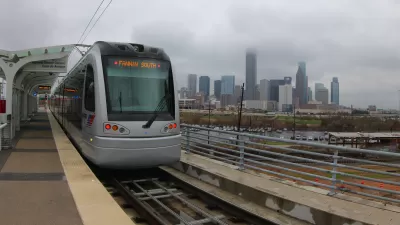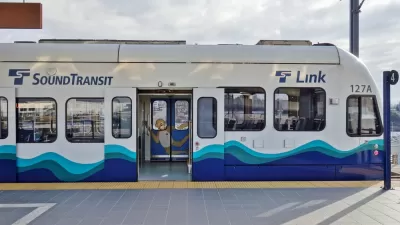The state legislature has largely reversed Gov. DeWine's cuts to public transit in the state, but advocates argue the new plan doesn't go far enough to address the needs of transit-dependent residents.

The Ohio House of Representatives has restored much of the funding that Governor Mike DeWine proposed cutting from public transit in the state, prompting optimism on the part of transit advocates who want to see more investment in the sector. Tyler Buchanan, reporting for the Ohio Capital Journal, writes that "Transportation Committee Chair Stephanie Kunze, R-Hilliard, announced the Senate’s plan allocates more money to public transportation than the House plan, with the total funding coming to nearly $70 million per year." Amanda Woodrum, a senior researcher with Policy Matters Ohio, called the increase "a solid step in the right direction," but "the amount is still much less than many advocates believe is necessary to sustain Ohio’s transit systems for the future." The state also expects some investment from the federal American Rescue Plan, which allocates $30 billion to the nation's public transportation systems.
Stu Nicholson, executive director of All Aboard Ohio, a group working to build support for public transportation, "proposes a legislative task force look into finding a long-term, dedicated source of funding for public transportation." Dave Greenspan, a former state lawmaker who now lobbies for MetroHealth System, agreed on the need for more investment in public transit, calling it a "lifeline connecting residents to jobs, shopping and health care." Environmental advocates also want to see the state reduce or eliminate the $100-$200 fees on hybrid and electric vehicles, which legislators argue supports funding transportation infrastructure that has historically relied on a gas tax.
FULL STORY: Ohio Senate plan ramps up public transit funding. Will the increase stay?

Planetizen Federal Action Tracker
A weekly monitor of how Trump’s orders and actions are impacting planners and planning in America.

San Francisco's School District Spent $105M To Build Affordable Housing for Teachers — And That's Just the Beginning
SFUSD joins a growing list of school districts using their land holdings to address housing affordability challenges faced by their own employees.

The Tiny, Adorable $7,000 Car Turning Japan Onto EVs
The single seat Mibot charges from a regular plug as quickly as an iPad, and is about half the price of an average EV.

Seattle's Plan for Adopting Driverless Cars
Equity, safety, accessibility and affordability are front of mind as the city prepares for robotaxis and other autonomous vehicles.

As Trump Phases Out FEMA, Is It Time to Flee the Floodplains?
With less federal funding available for disaster relief efforts, the need to relocate at-risk communities is more urgent than ever.

With Protected Lanes, 460% More People Commute by Bike
For those needing more ammo, more data proving what we already knew is here.
Urban Design for Planners 1: Software Tools
This six-course series explores essential urban design concepts using open source software and equips planners with the tools they need to participate fully in the urban design process.
Planning for Universal Design
Learn the tools for implementing Universal Design in planning regulations.
Smith Gee Studio
City of Charlotte
City of Camden Redevelopment Agency
City of Astoria
Transportation Research & Education Center (TREC) at Portland State University
US High Speed Rail Association
City of Camden Redevelopment Agency
Municipality of Princeton (NJ)





























